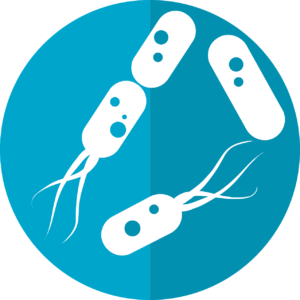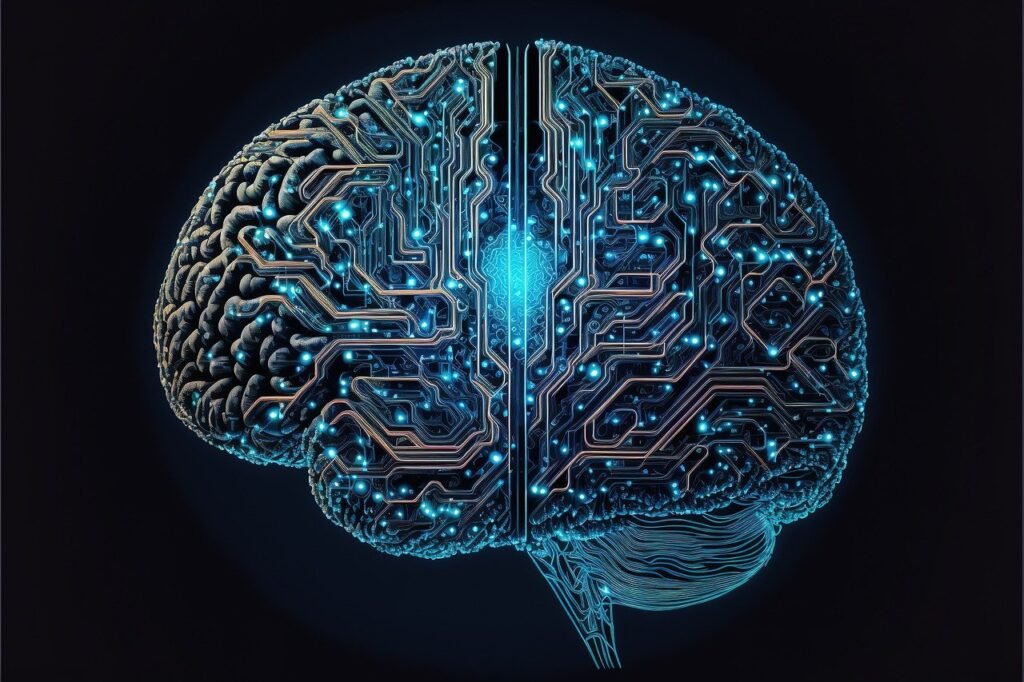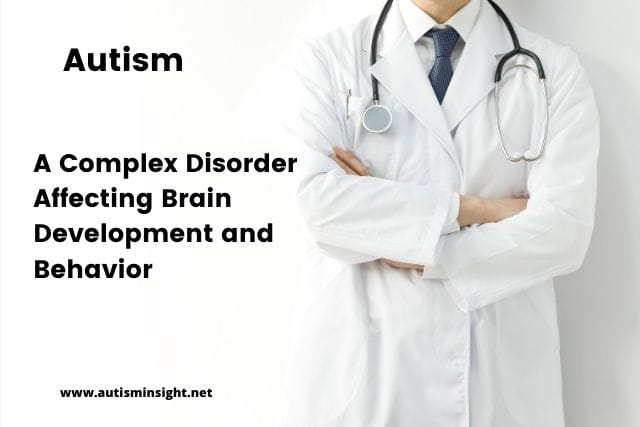Autism is a complex disorder that impacts brain development and behavior. Recent research has shown that anomalies in the interaction between the brain in autism and the gut play a crucial role in this disorder. These findings pave the way for new treatments and a better understanding of autism. In this article, we will explore the latest scientific advances regarding the brain-gut axis, the impact of the intestinal microbiome on the brain in autism, and the implications of these discoveries for future treatments.
1. The Brain-Gut Interaction in Autism
1.1 The Brain-Gut System: A Complementary Duo
The brain-gut system, also referred to as the “gut-brain axis,” describes the bidirectional communication between the brain and the gastrointestinal tract. This connection is mediated by chemical, neural, and immune signals that influence not only digestion but also mood, behavior, and even cognitive functions. This link is particularly important in individuals with autism, as imbalances in this axis can affect essential brain processes.
1.2 The Role of the Gut Microbiome
The gut microbiome refers to the billions of bacteria living in the intestines. These bacteria play a major role in food digestion and the production of chemicals that can directly influence the brain. In individuals with autism, research has shown that the microbiome may be imbalanced, which could contribute to the symptoms of the disorder. Recent studies have revealed that altered gut flora affects the production of neurotransmitters, such as serotonin, which regulates mood and behavior.

1.3 The Influence of the Gut on Autistic Behavior
Imbalances in the gut microbiome can have profound consequences on behavior. For example, individuals with autism often suffer from gastrointestinal issues, such as abdominal pain, bloating, and constipation, which can amplify repetitive behaviors and anxiety. A study in Nature Neuroscience shows that these intestinal symptoms can lead to behavioral disruptions, accentuating hallmark autistic traits such as social isolation and hyperactivity. Nature Neuroscience Study.
1.4 Recent Studies on Brain-Gut Interaction
Recent research has highlighted that anomalies in the brain-gut interaction are much more frequent in individuals with autism. For example, a study conducted at Harvard University explores the impact of microbial balance on the brain. The study shows that intestinal imbalances alter the function of certain brain regions, which could explain some autistic behaviors. This opens the door to new therapeutic avenues aimed at regulating this interaction to improve symptoms.
Table of Contents
2. Latest Scientific Discoveries on Autism
2.1 Brain in autism: Anomalies and Research Progress
Neuroscientific research has led to a better understanding of the brain anomalies observed in autistic individuals. Differences have been identified in brain regions responsible for communication, emotions, and sensory processing. These findings allow researchers to expand their understanding of the underlying mechanisms of autism. For example, brain imaging has shown abnormal activity in the prefrontal cortex, a brain area linked to executive functions and emotion regulation.
2.2 Gut Dysbiosis and Its Impact on Autism
Gut dysbiosis refers to an imbalance in the gut microbiome, often observed in individuals with autism. A study from the University of California reveals that autistic children have a different gut flora compared to neurotypical children. Researchers believe that these imbalances could disrupt the production of certain neurotransmitters and affect social and emotional behaviors. For instance, a low level of certain beneficial bacteria in the gut could be linked to increased stereotyped behaviors and attention disorders.
2.3 Implications of Recent Discoveries for Medical Research
Recent discoveries about the gut microbiome and brain activity in autistic individuals open the door to new therapeutic strategies. Treatments could now include interventions to regulate the microbiome or stimulate specific brain regions, helping alleviate autism symptoms. This has led to a new approach in autism management, where gut health is increasingly seen as a key factor in treating autism spectrum disorders.
2.4 Innovations in Brain Imaging Techniques
Technological advances in brain imaging techniques now allow for a better understanding of brain differences in autistic individuals. Technologies like functional MRI (fMRI) and positron emission tomography (PET) enable researchers to observe brain activity in real time and pinpoint areas of the brain that are altered in autistic individuals. These tools are paving the way for more targeted and personalized treatments.

3. The Impact of Discoveries on Autism Treatments
3.1 New Therapeutic Approaches Based on the Microbiome
Recent discoveries about the gut microbiome have led to innovative therapies. For example, treatments aimed at restoring the balance of gut flora using probiotics or prebiotics could improve gastrointestinal and behavioral symptoms associated with autism. These treatments have shown promising results in some clinical studies, particularly in reducing anxiety and repetitive behaviors in autistic children.
3.2 Personalized Medicine and Targeted Autism Treatments
Thanks to scientific advances, personalized medicine is becoming a key tool for treating autism. By considering each patient’s individual characteristics, such as their gut microbiome, it is now possible to offer more targeted treatments. Physicians can use genetic testing and microbiome analysis to determine the most effective interventions.
3.3 The Impact of Nutrition and Diet on Autism
Specific diets, such as gluten-free or casein-free diets, have been proposed as treatments for autism. Research shows that certain nutritional adjustments can have a positive effect on symptoms by regulating the gut microbiome and reducing inflammation. However, while these diets may benefit some individuals, further studies are needed to confirm their long-term efficacy.
3.4 Early Results from Clinical Trials
Current clinical trials are exploring different approaches to treat autism with a focus on the brain-gut axis. For example, a clinical trial at Stanford University is testing the effect of prebiotics on autistic symptoms. Early results suggest that these treatments could reduce compulsive behaviors and improve social communication in some children.
4. The Future of Autism Research: What Lies Ahead?
4.1 Future Treatments Based on the Brain-Gut Axis
The future of autism treatments looks promising thanks to discoveries about the brain-gut interaction. Researchers are working on therapies aimed at improving this connection to reduce autistic symptoms. Interventions such as microbiome transplants or gene therapies are being studied and could revolutionize autism care.

4.2 New Diagnostic Methods
The future of autism diagnosis may include tools that detect imbalances in the gut microbiome or brain anomalies at an earlier stage. Biological tests could complement traditional diagnostic methods and offer a more accurate picture of the disorder.
4.3 The Spirit of Innovation in Autism Research
Autism research is increasingly multidisciplinary. The intersection of genetics, neuroscience, and microbiology opens up avenues for innovation that will allow us to better understand autism and develop more effective solutions.
4.4 A Promising Future for Autistic Individuals
With increasing scientific discoveries and targeted treatments, the future looks promising for autistic individuals. Thanks to these new approaches, it is possible to envision better symptom management, improved quality of life, and a more inclusive society.
Conclusion
Recent discoveries on the brain-gut connection reveal its major role in autism. Imbalances in this axis may influence symptoms, leading to more targeted treatments. Gut microbiome regulation and personalized therapies show promise. These advances offer hope for better autism management. Integrating the gut into therapies could be key to future treatment.
Ressources:

Pingback: Is Autism a Disease? Debunking Myths and Revealing the Truth
Pingback: 6 Early Signs of Autism in Children: How to Recognize it
Pingback: Is Autism a Disease? Debunking Myths and Revealing the Truth | Autism insight
Pingback: 10 things not to do with an Autistic Person
Pingback: Autism Facial Features: Do Physical Traits Help Identify Autism?
Pingback: Percentage with Level 2 Autism: Understanding the Statistics
Pingback: MERT Therapy: Effective Treatment for Autism & Brain Health
Pingback: 10 things not to do with an Autistic Person
Pingback: Is Autism a Disease? Debunking Myths and Revealing the Truth
Proper hydration is critical for performance as properly as managing potential unwanted
facet effects. Semi-advanced bodybuilders can enhance the dosage vary
and cycle size. The dose could be increased by 20 mcg per week till the
optimum impact is achieved, often round mcg
for men and forty mcg for women. On a molecular stage, Clenbuterol works by
binding to beta-2 receptors, which triggers a posh biochemical cascade.
This will increase levels of cAMP, a messenger molecule
that facilitates metabolic processes like fat breakdown.
You could experience delicate unwanted facet effects at any dose, similar to a better physique temperature and elevated hunger (which won’t be welcome while cutting).
The muscles may also really feel slightly flat,
notably at larger doses. Your body naturally produces a specific amount of T3, so when you take lower than that quantity,
you’ll go backward and turn into deficient on this hormone.
The minimum recommended dose to start with and to assess the
impression on your self is 25mcg daily and no decrease. The
dosage may be elevated progressively over the following few days,
by 25mcg every day, until you attain your required most of
75mcg per day – 100mcg not often beneficial.
Cytomel (T3) is used medically by individuals with an underactive thyroid,
which might find yourself in weight achieve. T3, subsequently, assists with weight reduction not directly by replacing this thyroid hormone.
Steroid cycling is used by people who know precisely
what they need to obtain and when, as nicely as after they need to be steroid-free in relation to being tested.
Anabolic steroids are like putting a rocket on a push bike – but should you don’t know what you’re doing, then you’re sure to fail
or, worse, destroy not solely your positive aspects but your health6.
I discovered that again and again, and that’s
what inspired me to study as a lot as I may about steroids.
Clenbuterol works as a fats burner by rising the core temperature and boosting the metabolism
of the physique. It’s so efficient that it can even trigger weight loss even if you don’t limit your calorie intake an extreme quantity of
or should you don’t train religiously. In different words, you don’t have to work all that onerous to
do away with physique fats. But with exhausting strenuous workouts,
the load loss can even be extra dramatic.
When on a cycle with virtually any compound, you’ll notice that your recovery will substantially enhance.
You will see yourself recovering sooner and needing less downtime between sessions27.
A plan that by no means fails is to make use of Dbol for the first six weeks only at as a lot as 35mg day by day (but 25mg is okay, particularly
if that is your first).
This drug is considered one of the leaders in fat burning,
even Hollywood starts that are not bodybuilders use it to burn fat and lose weight.
The thermogenesis impact you get from it is incredibly highly effective and your
fats flip to energy straightaway after your
first dose. Not Like with anabolic steroids, the dosage of clenbuterol is similar for men and women. This is as a outcome of it affects the CNS somewhat
than engaged on a hormonal level (where ladies have considerably less testosterone and thus want smaller doses
of steroids to obtain the identical degree of results).
Due to its muscle relaxant results, clenbuterol is utilized
in livestock to minimize back labor complications. This indication was by no means
researched in people as a outcome of risks clenbuterol carries.
In cattle, clenbuterol and corrected birth-complications, reducing the necessity for
anesthesia.
Individual responses to Clenbuterol vary, and a few customers could additionally be extra vulnerable to experiencing nervousness and nervousness
than others. Those who are already predisposed
to nervousness disorders or have a history of mental well being
issues could also be significantly prone to these side effects.
You don’t need to mess with this as a outcome of it can lead to some very severe health circumstances,
similar to an irregular heartbeat, cardiac arrest, and even dying.
Clenbuterol could cause your physique to lose potassium,
which may lead to numerous well being problems.
In different words, you can fail on orals and injectables when you
don’t do the other things right. When it involves bodybuilding and athletic efficiency, we primarily talk about steroids in the form of anabolic-androgenic steroids
(AAS)3. These steroids embody both pure and artificial androgens, that are derived from or based
mostly on testosterone4. The anabolic element promotes muscle progress, whereas
the androgenic side relates to the stimulated growth of male attributes for which
testosterone is responsible5. By growing the metabolic price and stimulating fats breakdown, it allows users
to achieve lower physique fats percentages, revealing muscle
definition gained throughout bulking phases. The outcomes of a
clen cycle will differ significantly depending upon one’s diet, dosage, cycle length and expertise.
Clenbuterol is best utilized in cycles, which involves alternating
intervals of usage and non-usage. One of the popular cycle choices includes utilizing Clenbuterol for two
weeks, followed by a two-week break. This sample aids in minimizing the chance of encountering unwanted unwanted effects.
It is necessary to pay attention to those cycles to ensure Clenbuterol
stays effective for you. Clenbuterol, when used responsibly
and mindfully, can deliver an array of benefits to bodybuilders and fitness enthusiasts.
Clenbuterol is a nicely known efficient fats burner that suits
pre-contest weight-reduction plan stages because it has a robust anti-catabolic
property that will help stop muscle loss. Clen was designed initially as an bronchial asthma medicine
in the beta receptor antagonist class of drugs. Anavar comes with potential toxicity issues to
the liver, but a medium-length cycle should be manageable for most wholesome guys.
There’s some flexibility in Anavar dosing,
with some guys using as low as 30mg daily and going as a lot as 100mg in more hardcore cycles.
Anavar will assist you to keep positive aspects and work as a compound to keep your progress regular with out delivering huge results.
If you’re going to run an Anavar cycle, take a
glance at my full Anavar (Oxandrolone) cycle information. When it comes to bodybuilding,
Oxandrolone is well-liked as a result of it’s highly anabolic and minimally androgenic.
Some peer-reviewed research have discovered that this drug’s anabolic effects cause weight reduction and promote
skeletal muscle growth. Even some athletes, especially girls, have taken this food regimen capsule to boost their
muscle mass and efficiency endurance. Anavar is a steroid that will have unwanted effects, which might concern those
that want to construct muscle and enhance bodily performance.
References:
How to get legal Steroids